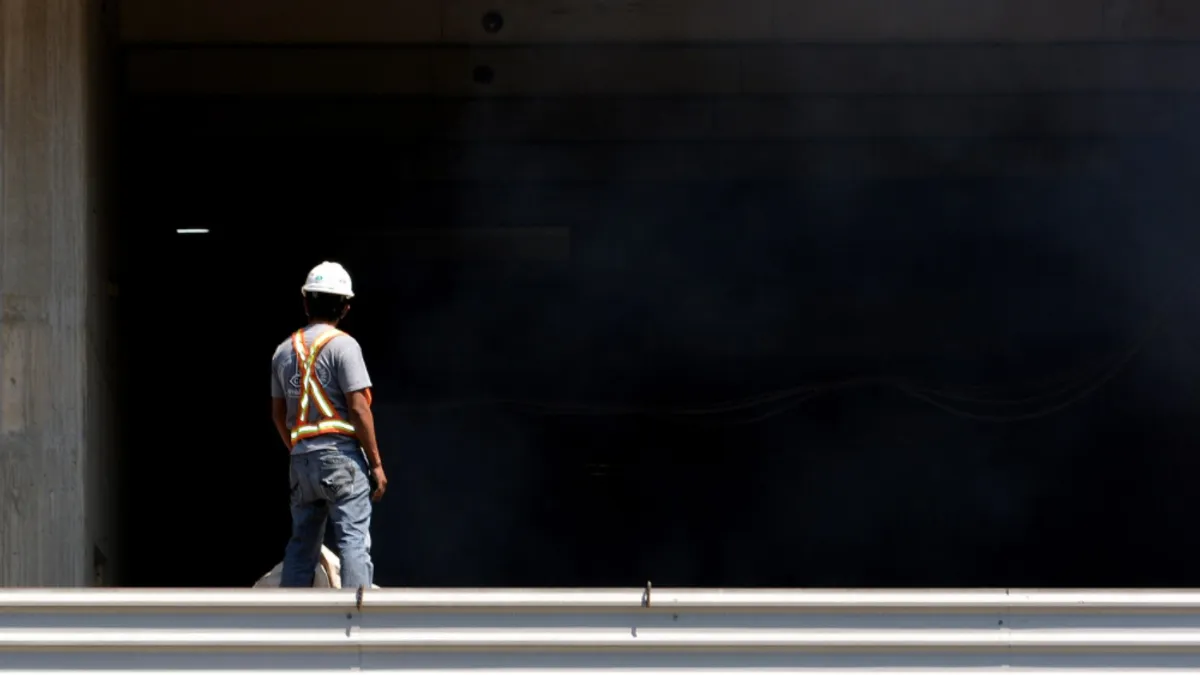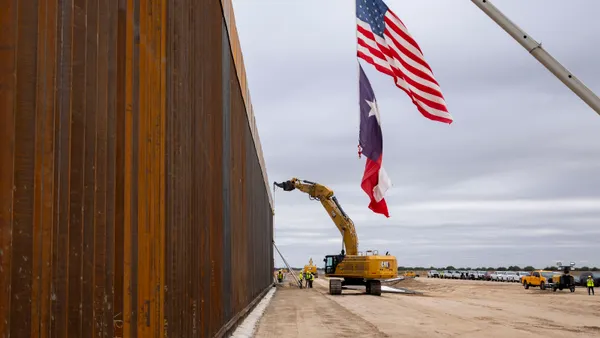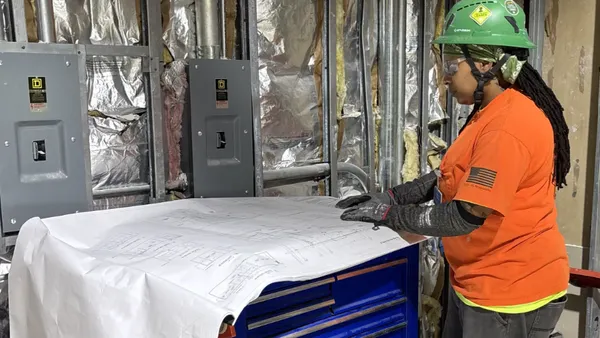In any industry, suicide prevention and education requires a variety of resources, as well as strong leadership from management, safety professionals and human resources. Yet, according to Greg Sizemore, the first thing construction employers should do to alleviate stress on workers — especially right now — is to be compassionate.
Sizemore is Associated Builders and Contractors' vice president of workforce development safety health and environmental and chairperson of the Construction Industry Alliance for Suicide Prevention. Here, he talks with Construction Dive about Suicide Prevention Month and how the coronavirus has made suicide prevention tactics even more important for construction firms.
How has the added stress of the COVID-19 crisis added to contractors' already high risk of suicide?
COVID-19 has increased stressors for everyone, but this has been especially detrimental for people already at risk, which includes many people who work in construction. And while we know an underlying mental illness is the No. 1 risk for suicide, COVID-19 has the potential to exacerbate existing anxiety, depression or other mental health issues.
Statistically, construction employees are at a higher risk because men, who make up 91% of the construction workforce, are more likely to die by suicide. The construction industry also employs a large population of veterans who are at a 1.5 times greater risk for suicide compared to nonveterans, according to the U.S. Department of Veterans Affairs. The average age of our workforce also trends older, which adds to a combination of factors, including complications related to COVID-19 exposure.
That said, there is no doubt that COVID-19 has been extremely stressful for everyone. Prior to the COVID-19 pandemic, the U.S. workforce had a routine and then in a moment, everything stopped, resulting in health fears and economic havoc. For months now, families have been dealing with a health crisis with many unknowns, employment instability, financial concerns, gaps in childcare and insolation, just to name a few.
In addition, a new group of the U.S. workforce was suddenly considered front line, which in many cases included construction workers. All of those factors have the potential to compound and increase the risk of suicide.
What can firms do to help alleviate this added stress?
We know it’s our responsibility to make sure our employees go home in the same — or better — condition than when they arrived on the jobsite and safely return the next morning. And while how we deliver on that commitment may change, especially as we respond to the COVID-19 pandemic, the safety and health of our workers is always our first priority.
Suicide prevention and education in any industry requires strong interpersonal skills and resources, as well as a strong leadership from management, safety professionals and human resources. Yet, the first thing we can do to alleviate the additional stress of our workforce, especially right now, is be compassionate.
We need to foster a caring environment that includes an open-door policy and strong interpersonal communication. We need to create a workplace culture that encourages people not just to look out for themselves, but also the wellbeing and safety of others. A simple “how are you doing?” can be a lifeline to someone who is struggling.
We also need to educate and empower. It is so important to train our workers to both be able to identify and address signs of mental distress. And then to take action through suicide prevention programs such as LivingWorks, which educates people on how to identify warning signs and approach someone at risk of suicide and connect them to support. This service is free to access through the Construction Industry Alliance for Suicide Prevention (CIASP) until Sept. 30.
In addition, companies need to share benefits they already have in place, as well as new employee resources provided through recent state and federal COVID-19 legislation, to ensure people have what they need to ask for and receive help. This includes:
- Promoting employee assistance programs and other mental health services.
- Improving mental health literacy by educating workers about psychological safety in the same way we do physical safety.
- Providing wellness workshops.
- Posting resources, such as the National Suicide Prevention Lifeline phone number and the CIASP materials.
On a larger scale, we need to assess our business practices to see what practical steps we can take to reduce overall suicide risk factors, like putting together crews that consistently work together. This allows workers to develop relationships with their colleagues — especially when working out of town — which reduces isolation, one of the top non-mental illness-related risk factors for suicide. As a result, the crews know each other well enough to not only recognize warning signs, but also care enough to take action.
We need to focus on access by instituting comprehensive mental health and suicide prevention polices (if not already in place), including employee assistance and treatment programs and crisis intervention education. While this may seem overwhelming, construction is an industry with a natural safety focus, and there are many touchpoints where we can immediately incorporate suicide prevention measures.
CIASP offers a number of resources, including toolbox talks, display posters and screening tools. Also available is an analysis and integration checklist to help companies evaluate suicide prevention preparedness and outline steps to create a company-wide culture that addresses suicide prevention and mental health.
What positive steps have been achieved in recent years in suicide prevention for construction industry workers?
The fact that we’re even having this conversation is so important. And while a national conversation raises awareness about the risk of suicide, preventative steps and action need to happen locally on our jobsites, in our workplaces and in our communities.
CIASP was founded in 2016 and born out of necessity to address a Centers for Disease Control and Prevention study that ranked construction and extraction as the No. 1 occupational group for deaths by suicide. That study highlighted the immediate need to incorporate suicide prevention on our jobsites and in our industry, connect contractors and the workforce to resources and tools, and importantly, take steps to shatter the stigma surrounding mental health issues — especially in a male-dominated industry such as construction.
While we’ve taken the important first step to acknowledge this is a problem and something we urgently need to address, significant work still needs to be done to make suicide prevention a health and safety priority and for construction to become a zero-suicide industry. That said, I’ve been proud to see how the construction industry has come together so far to address this issue and protect our workforce, which is our most important asset.
To learn more, contractors can visit preventconstructionsuicide.com and sign the pledge to STAND Up for suicide prevention.














